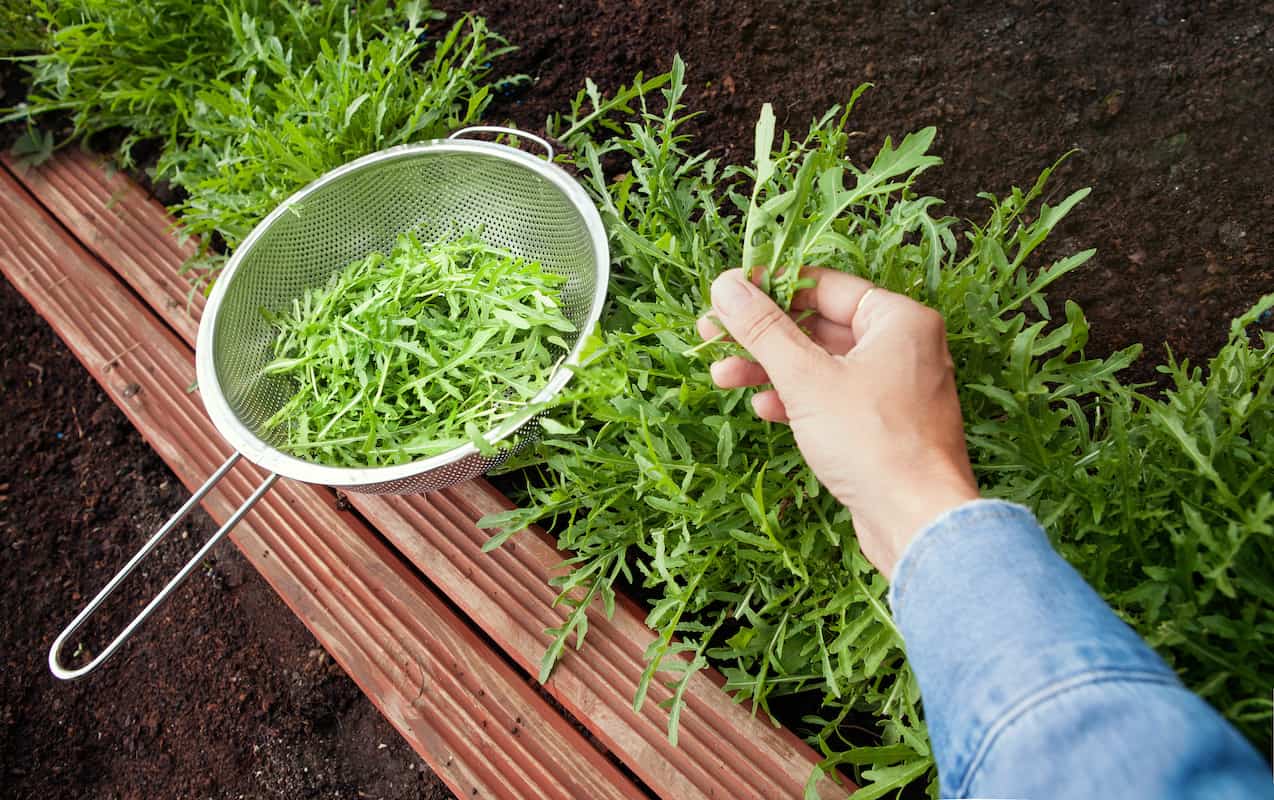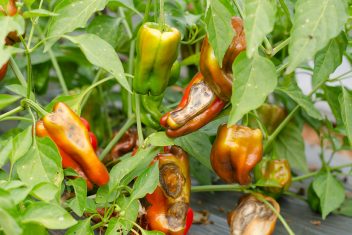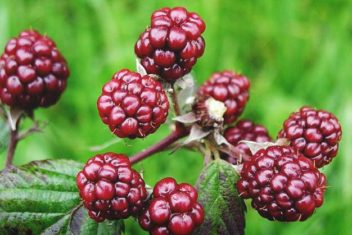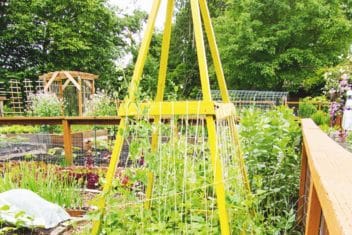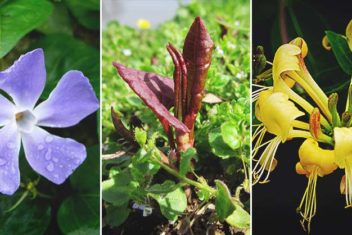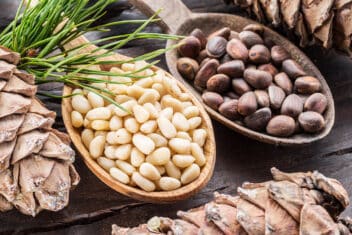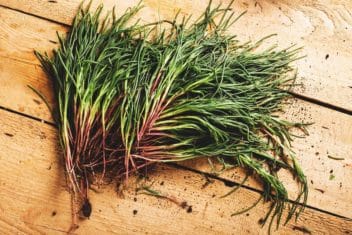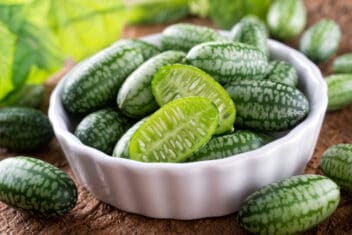Get a late start on gardening? Need a harvest ASAP? If you’re looking for quick-growing plants that will produce crops or flowers in 30 days or under, we’ll show you some fantastic options.
These quick-growing veggies give you fresh, healthy food fast. Or, use some of these flower options to fill spaces add color in the garden when you suddenly have an empty spot.
Take a look at our list below of 10 plants that grow in under 30 days and give some of them a go in your garden.
Vegetable Plants
These are the biggest bang-for-buck vegetables that are easy to plant continuously throughout the season. These veggies can also be planted directly in the garden or inside in pots and will be ready in under 30 days.
Many of them even work well indoors.
1. Radishes
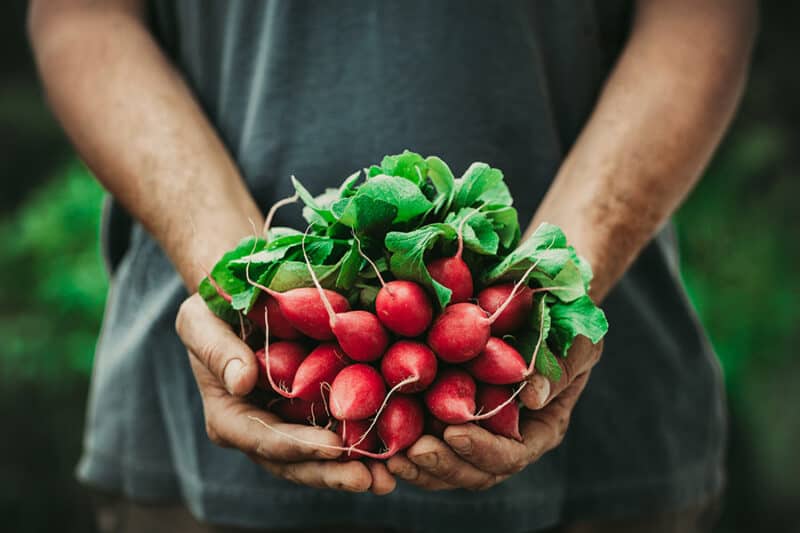
Radish is the star of the show when it comes to quick-growing vegetables. Sprinkle them around your slow-growing plants and the radish will be ready in as little as 20 days.
- Zone: Hardy annual so no specific zones.
- Soil type: 6.5 to 7 pH, well-draining.
- Water: Give regular water and keep the soil moist. A radish bulb will split with irregular watering.
Plant starting in the spring, about four weeks before the last frost on average for your area. Plant seeds directly in the garden 1/2 in inch deep and 1 inch apart. Rows should be 12 inches apart or plant in groups in between or under other plants.
Sow every 10 days or so for a continuous harvest. Stop planting once temps reach above 75°F. You can pick up planting again in the early fall.
2. Lettuce
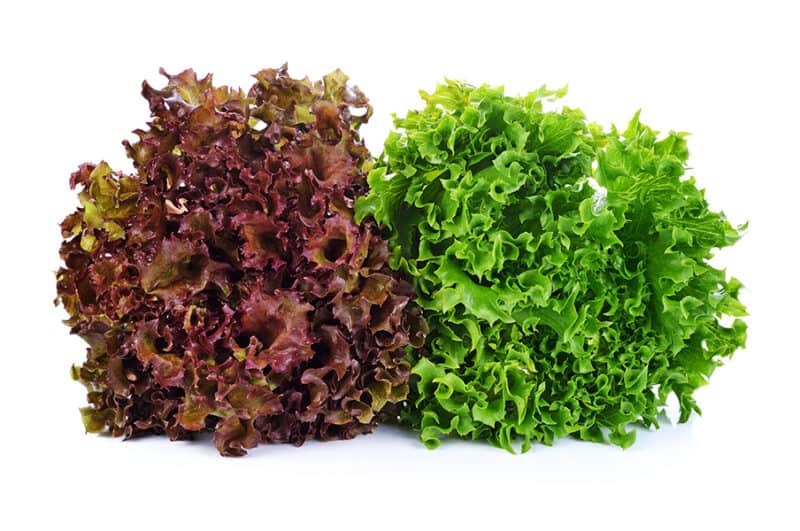
So long as you choose a variety that allows you to cut-and-come-again, like oakleaf or baby leaf, lettuce is a quick and reliable grower.
Not only will you have a very fast-growing plant, but it can also last a long time even with a continual harvest. The average time for salad greens from planting to harvest is 25 days.
- Zone: 4 to 9
- Soil type: Slightly acidic to neutral with a pH of 6 to 6.5.
- Water: Don’t allow the soil to dry out. Many salad greens will bolt if they’re thirsty. Keep the soil moist, but not soaked.
Plant starting in the early spring, with seeds 1/4 inch deep and 1/2 inch apart. Rows should be 12 inches apart. Cover lightly and water. Ensure the last frost has passed.
Sow indoors in late winter if you want to transplant your seedlings. Use good quality potting mix and sprinkle seeds over the surface. Cover lightly and water with a spray bottle. Continue spraying until the seeds have germinated.
Transplant when seedlings are about 3 inches tall. Plant every 2 weeks for a continuous supply.
Try growing inside all winter long in containers. Stop planting lettuce outdoors while temperatures are above 75°F.
3. Spinach

Spinach is a useful green, it can be eaten raw when young or cooked into stews, casseroles, risotto, and savory pies. It takes approximately 30 days to harvest this plant.
- Zone – 2 to 9
- Soil type – Neutral with a pH of 7. Loamy, well-draining soil.
- Water: Spinach will bolt or be susceptible to disease if it struggles for water. Provide enough to keep the soil moist, but don’t water the plant itself. Provide water to the surrounding soil to avoid disease.
Sow directly in the garden six weeks before the average date of the last frost in your area. Spinach doesn’t mind the cold.
Spinach requires more space than salad greens, so plant six inches apart with rows 15 to 20 inches apart. Seeds should be planted 1/2 inch deep in well-turned soil full of rich organic matter.
Sow every 10 to 15 days, depending on your usage.
4. Spring Onions
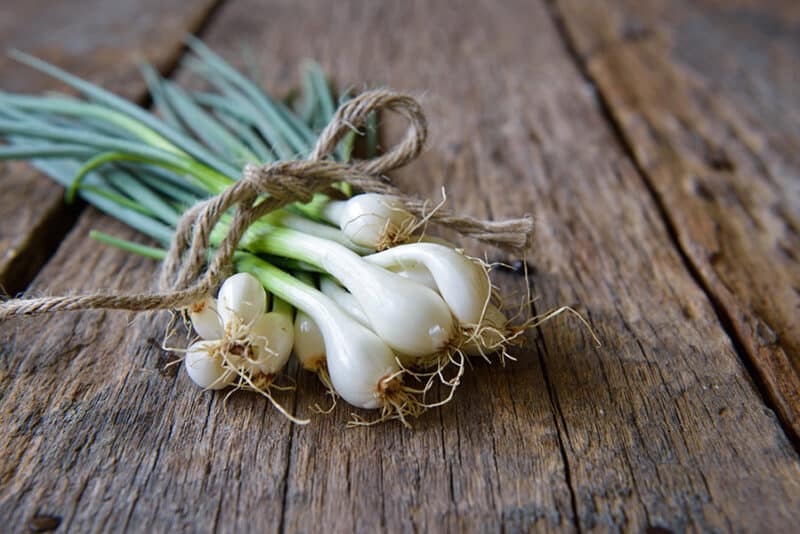
These alliums are fuss-free – plant in the spring and sit back and watch the harvest emerge. Once planted, there is little to do.
For an early harvest, sow towards the end of winter. Spring onions are usable after 30 days for harvesting the upper leaf area. The lower white part takes 60 days to develop sufficiently.
- Zone: 5 to 9
- Soil Type: preferably 7.0 pH and well-draining loamy soil.
- Water: Keep the soil moist but not waterlogged.
Sow outside in spring four weeks before the last frost. Make long grooves in the soil 1/2 inch deep and rows 6 inches apart.
Sprinkle seeds in the grooves and cover lightly before gently watering. Thin out and use as soon as the spring onions are big enough. Leave the others to grow big or keep using them as you need.
Plant a couple of rows every 10 days.
5. Arugula
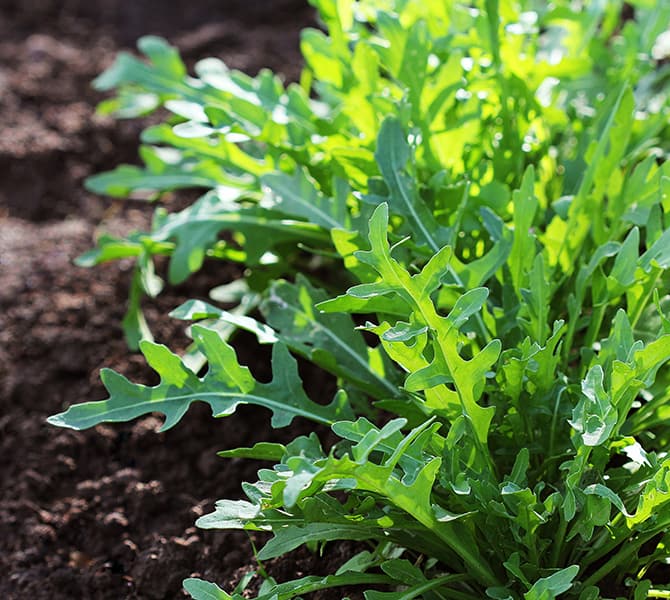
Also known as rocket, arugula is somewhat frost tolerant and it tends to self-seed once you’ve planted it once. Germination is a swift 3 to 4 days and harvest within 30 days of planting the seed.
- Zone: 3 to 11
- Soil Type: Loamy and well-draining with a neutral pH of 6 to 7.
- Water: Water regularly, especially in hot weather. Arugula bolts to seed very easily in dry conditions.
Sow in late summer for an early winter harvest. Also, sow in spring as soon as the soil can be worked. Sow 1/4 inch deep and one inch apart. Make rows 10 inches apart and cover with soil before watering. Arugula is hardy and rarely fails.
Sow every 3 weeks.
6. Turnip Greens
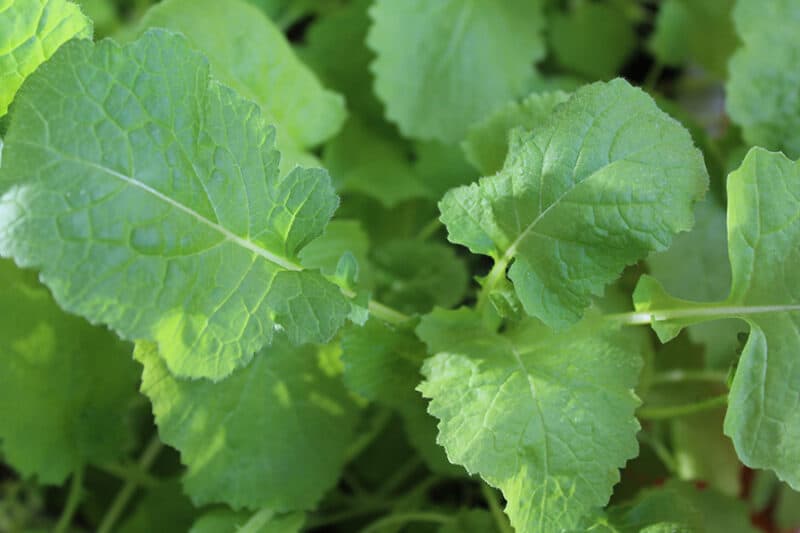
Turnip greens are lesser-known plants that grow in under 30 days. They require plenty of water. They also don’t mind crowding, which helps to stop roots forming into turnip bulbs. That’s perfect since we’re just after the greens.
- Zone: 2 to 9
- Soil Type: Dig in well-rotted manure or organic matter and turnip greens will be happy. Aim for a pH of 5.5 to 6.8.
- Water: Water well and when the plant is big enough, only water the soil, not the leaves to avoid disease. Water the seeds and small seedlings with a spray bottle.
Sow in the spring and fall in warmer areas in rows 1/2 inch deep and 2 inches wide. Rows should be 12 inches apart. Harvest the leaves as they appear to stop root formation. Use the young tender leaves as you would spinach.
7. Microgreens

These trendy little plants are actually just the baby version of grown-up leafy greens, and they pack a nutritional punch.
- Zone: Anywhere because the best results will come from these being in a warm greenhouse or on your windowsill.
- Soil Type: Use seed raising mix or a specialty microgreens formula.
- Water – Keep moist with a spray bottle.
Fill a seed tray with seed raising mix and sprinkle a seed mix onto the surface. You don’t need to cover them. To harvest, snip over meals for a healthy, edible garnish. They crop after about 10 days.
Radishes, broccoli, lettuce, beets, wheat, and turnips all work well as microgreens.
Flowering Plants
The following flowers all germinate within a week and will grow rapidly in the right conditions. Use these varieties for instant color.
If you’re planting flowers for a special occasion as cutting flowers, get them going inside eight weeks before they are needed and keep them watered and fed.
8. Marigolds
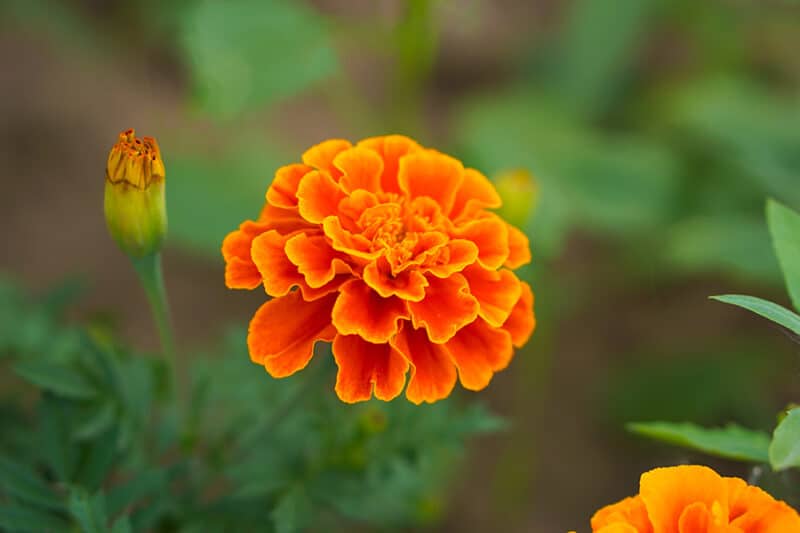
Plant marigold seeds in seed raising mix or soil that’s about 70°F. That extra warm soil will boost the growth of the plant and give you a show of color much quicker, in around 4 weeks.
If the temperatures are cooler, the marigold will grow well, but the flower part may take a bit longer.
- Exposure: Plant in full sun with afternoon shade.
- Water – Regular water to prevent the soil from drying out. Deadhead the flowers as they die off.
Plant directly in the garden in spring after the last frost or indoors in pots eight weeks before the last frost. Plant seeds 1/2 inch deep and between 6 and 18 inches apart, depending on the size.
9. Cosmos
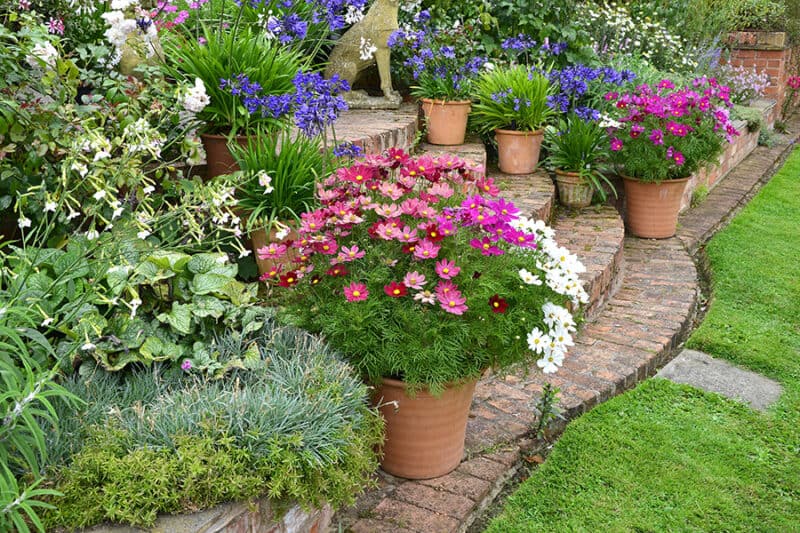
Cosmos come in all shapes and colors. Some will take up to eight weeks to grow, other cosmo plants grow in 30 days, so make sure to buy the variety that will grow in your area quickly.
- Exposure: After the last frost, plant 1/4 inch deep and 15 inches apart. Plant in a sunny position.
- Water: Cosmos are reasonably drought tolerant, but if you want rapid growth, water well and don’t let the soil dry out.
Sow the seeds in seed raising mix or directly into the ground when the soil temperature is a consistent 70ºF. Some varieties of cosmos will bloom in 4 weeks easily, others will grow quickly but bloom much later.
10. Zinnias
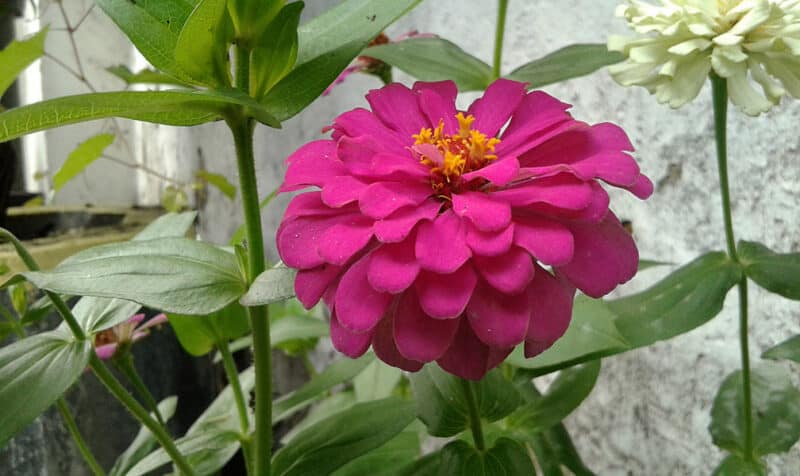
Plant seed at 70ºF for rapid germination and as a kickstart for growth. Some zinnias will flower within 4 weeks or under.
- Exposure: They love the sun, but will tolerate a little shade throughout the day.
- Water: Don’t allow the soil to dry out. Water deeply once a week and lightly on other days if required.
Sow after the last frost in groups about 10 to 12 inches apart.
Rapid Growth Tips
- Many plants grow quickly given the right circumstances. When you’re after swift growth, you need to give them the best conditions possible.
- Use good quality seed raising mix.
- Avoid any unwanted nasties by using only clean seed raising pots and garden tools.
- Use heat pads to maintain a constant 70ºF soil while germinating and when growing.
- Don’t apply fertilizer until the first leaves have formed at the base of the plant.
- Wait until the last frost has passed when sowing directly into the garden if the plant is not cold tolerant.
- Don’t allow the soil to dry out and make sure you keep a consistent watering schedule.
The plants listed above are all capable of growing and blooming in 30 days. The conditions need to be right and the variety must be the correct one for your area.
Have fun and experiment. See how quickly you can grow a quality vegetable or flower.
